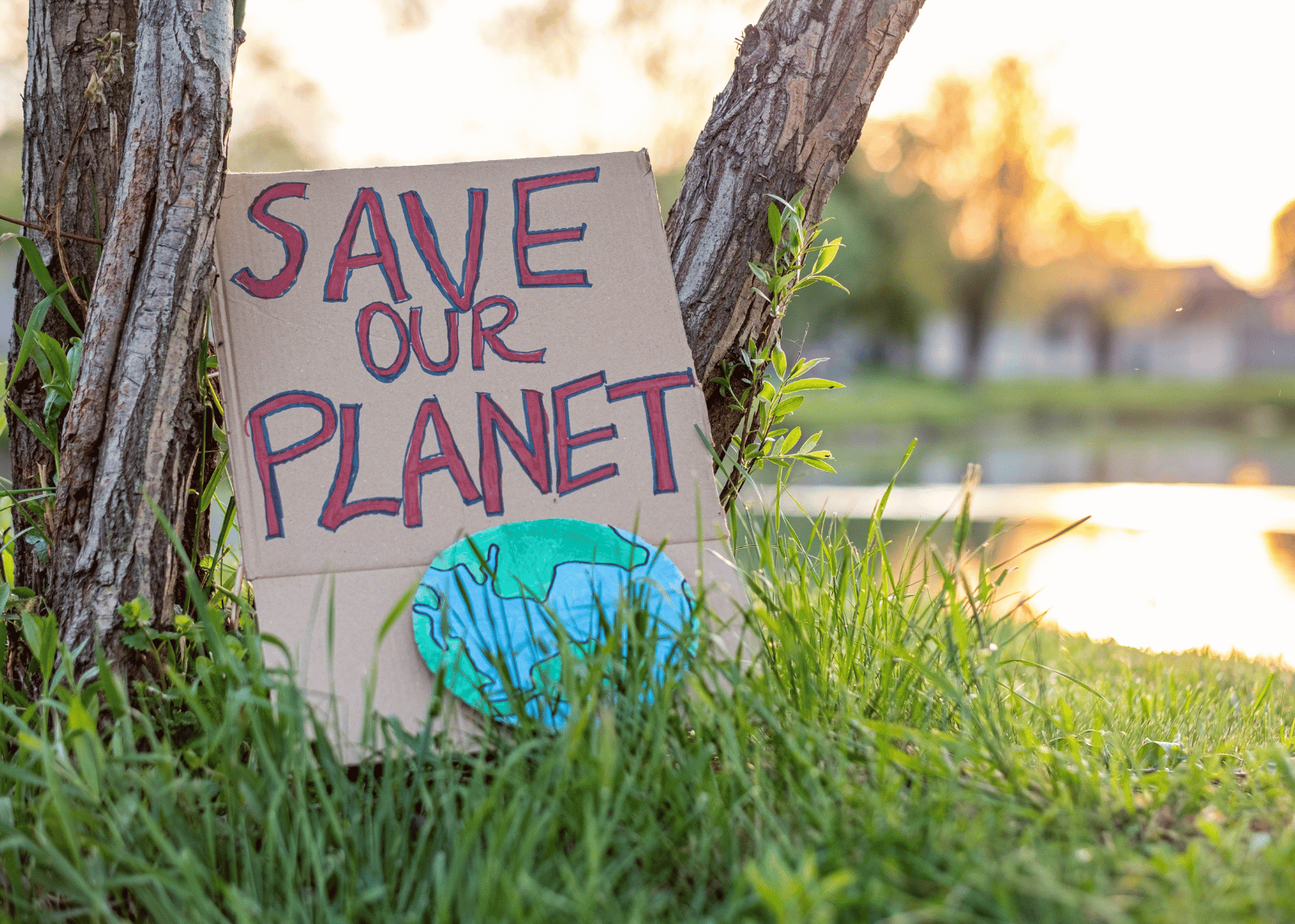Protect Our Planet
In a city known for its grandeur and technological advancements, Dubai faced an unprecedented challenge: flooding. Contrary to its usual arid climate, the sight of inundated streets and overwhelmed drainage systems was a jarring anomaly, shedding light on the complexities of water management in a rapidly growing metropolis.
Unraveling the Crisis: Coping with Extreme Weather Events
Dubai’s flood crisis unfolded amidst relentless rainfall, an occurrence seldom witnessed in the region. Despite the city’s occasional encounters with downpours, the sheer intensity and duration of the rain caught authorities off guard. The transformation of streets into waterways and neighborhoods into temporary islands presented a surreal spectacle for residents amidst the desert landscape.
The city’s infrastructure, tailored primarily for dry conditions, struggled to cope with the deluge. Drainage systems buckled under the weight of the unprecedented water flow, failing to efficiently divert it away from urban areas. Once bustling thoroughfares resembled shallow streams, impeding transportation and leading to extensive traffic congestion.
Challenges for Residents: Navigating the Deluge
Dubai’s residents, accustomed to the city’s efficiency, faced unparalleled challenges during the flood. Many found themselves confined to their homes or workplaces, unable to navigate submerged roads and impassable streets. What were once brief commutes stretched into hours, exacerbating frustrations and disrupting daily routines.
Businesses were not spared from the crisis, experiencing operational standstills due to logistical hurdles and infrastructure damage. Restaurants, shops, and offices grappled with water infiltration and dwindling foot traffic, highlighting the vulnerability of urban ecosystems to extreme weather events.
Controversial Measures: Cloud Seeding and Flood Prevention
In response to the crisis, authorities explored unconventional solutions such as cloud seeding to mitigate the severity of the flooding. This weather modification technique aimed to induce rainfall and redirect it away from densely populated areas. However, debates ensued regarding its effectiveness and ethical implications, underscoring the complexities of modern disaster response efforts.
Towards Resilient Urban Planning: Lessons Learned
The Dubai flood crisis catalyzed the re-evaluation of disaster preparedness and sustainable urban planning strategies. With extreme weather events becoming increasingly frequent, cities must prioritize resilience and sustainability in their development agendas. Investments in upgraded drainage systems, emergency evacuation plans, and green infrastructure are imperative to mitigate future flood risks.
Moreover, fostering community engagement and awareness is essential in building a collective response to environmental challenges. Dubai embarked on a journey towards comprehensive disaster preparedness, leveraging technological innovations and interdisciplinary collaborations to safeguard its future. These efforts underscore the city’s commitment to resilience and adaptation in the face of nature’s unpredictability.
Scorching Reality: Exploring the Impact of Heat Waves and Rising Temperatures in India and
Beyond
As temperatures soar and heat waves become increasingly frequent, the scorching reality of climate change is felt acutely across India and around the globe. What was once considered an occasional discomfort has evolved into a pressing environmental crisis, with far-reaching consequences for human health, ecosystems, and economies.
India’s Sweltering Struggle: Heat Waves on the Subcontinent
In India, the sweltering heat waves grip the nation with relentless intensity, pushing mercury levels to alarming heights. From the arid deserts of Rajasthan to the bustling streets of Mumbai, millions endure stifling temperatures that surpass historical records. The effects are profound, particularly for vulnerable communities living in urban slums and rural areas with limited access to cooling infrastructure.
The impact on human health is staggering, with heat-related illnesses ranging from heatstroke to dehydration claiming lives every year. The elderly, children and outdoor laborers are particularly susceptible, facing heightened risks of heat exhaustion and heatstroke. Moreover, the scorching temperatures exacerbate existing health conditions, placing additional strain on healthcare systems ill-equipped to cope with the surge in demand
Global Ramifications: Unpredictable Weather Patterns
Beyond India’s borders, the repercussions of rising temperatures reverberate across continents, manifesting in unpredictable weather patterns and extreme climatic events. Heat waves, once considered anomalies, have become a regular occurrence in regions as diverse as North America, Europe, and Australia. The consequences are dire, leading to wildfires, crop failures, and water shortages with far-reaching implications for ecosystems and livelihoods.
The link between climate change and extreme weather events is undeniable, with scientific consensus pointing to human activities as the primary driver of rising temperatures. Carbon emissions from burning fossil fuels, deforestation, and industrial processes have intensified the greenhouse effect, trapping heat in the Earth’s atmosphere and fueling global warming.
Adapting to the Heat: Mitigating the Impact
In the face of escalating temperatures and heat waves, proactive measures are imperative to mitigate the impact and build resilience. Governments, businesses, and communities must prioritize climate adaptation strategies, investing in heat-resilient infrastructure, urban greening initiatives, and early warning systems to protect vulnerable populations.
Furthermore, concerted efforts to reduce greenhouse gas emissions are essential to curb the trajectory of global warming and limit the severity of future heat waves. Transitioning to renewable energy sources, promoting energy efficiency, and adopting sustainable land-use practices are critical steps towards mitigating climate change and safeguarding the planet for future generations.
Earthquake in Tibet and Bay of Bengal: Nature’s Unpredictable Fury
In a month marked by upheaval in the northern hemisphere, two seismic events shook the very foundations of our understanding of nature’s unpredictability. From the towering peaks of Tibet to the tranquil waters of the Bay of Bengal, the earthquake and its aftermath served as a stark reminder of our planet’s volatile temperament and the imperative of responsible leadership in safeguarding our collective future.

Tremors in Tibet: Unraveling the Earth’s Fury
In the rugged terrain of Tibet, a region known for its majestic mountains and spiritual serenity, the earth convulsed with unprecedented force. The earthquake, a sudden rupture in the Earth’s crust, unleashed chaos and destruction, leaving communities reeling in its wake. Homes were reduced to rubble, roads rendered impassable, and lives forever altered by the tremors of nature’s fury.
For the residents of Tibet, accustomed to the region’s geological instability, the earthquake was a sobering reminder of their vulnerability to natural disasters. Despite advances in seismic monitoring and disaster preparedness, the unpredictability of earthquakes remains a daunting challenge, underscoring the importance of resilience and adaptation in the face of nature’s caprice.
Ripples in the Bay of Bengal: A Watery Abyss
As if in tandem with the seismic turmoil in Tibet, the tranquil waters of the Bay of Bengal bore witness to their upheaval. A powerful underwater disturbance, triggered by tectonic forces beneath the ocean floor, sent shockwaves reverberating across the surface. Tsunami warnings echoed along coastal communities, evoking memories of past catastrophes and instilling a sense of dread in the hearts of millions.
While the region was spared the catastrophic waves that devastated it in the past, the event served as a poignant reminder of the ever-present threat posed by seismic activity in the Bay of Bengal. With densely populated coastal areas at risk of inundation, proactive measures to enhance early warning systems and disaster preparedness are paramount in safeguarding lives and livelihoods.
Unveiling Uttarakhand’s Forest Inferno
In the tranquil woods of Nainital and Pauri Garhwal, a stark reality unfolds: the raging fires are not acts of nature but the consequences of human carelessness. With each passing day, the battle against the blaze intensifies, as courageous souls, aided by the Indian Air Force, strive to contain the inferno.
Despite the challenges, pockets of success emerge, signaling the efficacy of relentless efforts by forest officials. Yet, amidst the triumphs lies a grim truth: the fires are mostly man-made. Swift action by authorities in Rudraprayag leads to the arrest of those responsible, many of whom carelessly ignited their farmlands, unaware of the catastrophic consequences.
As the smoke clears, Uttarakhand faces a critical juncture, where the actions of a few threaten the very fabric of its natural splendor.
Leadership in the Face of Adversity: A Call to Action
In the aftermath of these twin disasters, the importance of visionary leadership in addressing the challenges of a changing climate and unpredictable nature cannot be overstated. As stewards of our planet, we must prioritize sustainability, resilience, and responsible environmental stewardship in our decision-making processes.
A mindful selection of leaders who prioritize the preservation of our planet and the well-being of future generations is essential in navigating the complexities of a rapidly evolving world. From advocating for the planting of more trees to reducing pollution and investing in advanced technologies for weather prediction, proactive measures are key to mitigating the impact of natural disasters and building a more sustainable future.
As we reflect on the series of unpredictable weather events that have unfolded across the globe, from the Dubai floods to the scorching heatwaves in India and the frequent earthquakes shaking our very foundations, one undeniable truth emerges: our planet’s weather patterns are becoming increasingly erratic and unpredictable. In the face of this uncertainty, there is a profound sense of responsibility that weighs heavily upon us all.
Each flood, heatwave, forest fire and earthquake serves as a stark reminder of the fragility of our planet and the interconnectedness of all life upon it. It is a wake-up call, urging us to reevaluate our relationship with the Earth and the impact of our actions upon its delicate ecosystems. We cannot afford to remain passive observers in the face of environmental upheaval; rather, we must embrace our role as custodians of this precious planet and
champions of its preservation.
It is a responsibility that transcends borders, ideologies, and generations. For it is not only our own lives that hang in the balance but the future of our children, grandchildren, and generations yet unborn. As stewards of this Earth, we hold the power to shape its destiny and ensure a legacy of sustainability, resilience, and abundance for all who call it home.
Let us heed the call to action that these unpredictable weather events so clearly articulate. Let us commit to reducing our carbon footprint, conserving our natural resources, and protecting the vulnerable ecosystems that sustain life on Earth. Let us embrace sustainable practices in our daily lives, advocate for responsible environmental policies, and hold our leaders accountable for their stewardship of our planet.
In the end, it is not only the Earth that we are safeguarding, but the hopes, dreams, and aspirations of future generations. Let us rise to the challenge with courage, compassion, and conviction, knowing that our collective efforts today will shape the world of tomorrow. Together, let us ensure that we leave behind a planet that is not only habitable but thriving, so that our children may inherit a world of beauty, wonder, and infinite possibility.




